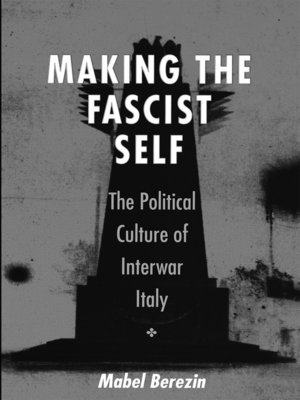Making the Fascist Self
ebook ∣ The Political Culture of Interwar Italy · The Wilder House Series in Politics, History and Culture
By Mabel Berezin

Sign up to save your library
With an OverDrive account, you can save your favorite libraries for at-a-glance information about availability. Find out more about OverDrive accounts.
Find this title in Libby, the library reading app by OverDrive.



Search for a digital library with this title
Title found at these libraries:
| Library Name | Distance |
|---|---|
| Loading... |
In her examination of the culture of Italian fascism, Mabel Berezin focuses on how Mussolini's regime consciously constructed a nonliberal public sphere to support its political aims. Fascism stresses form over content, she believes, and the regime tried to build its political support through the careful construction and manipulation of public spectacles or rituals such as parades, commemoration ceremonies, and holiday festivities. The fascists believed they could rely on the motivating power of spectacle, and experiential symbols.
In contrast with the liberal democratic notion of separable public and private selves, Italian fascism attempted to merge the public and private selves in political spectacles, creating communities of feeling in public piazzas. Such communities were only temporary, Berezin explains, and fascist identity was only formed to the extent that it could be articulated in a language of pre-existing cultural identities. In the Italian case, those identities meant the popular culture of Roman Catholicism and the cult of motherhood.
Berezin hypothesizes that at particular historical moments certain social groups which perceive the division of public and private self as untenable on cultural grounds will gain political ascendance. Her hypothesis opens a new perspective on how fascism works.







